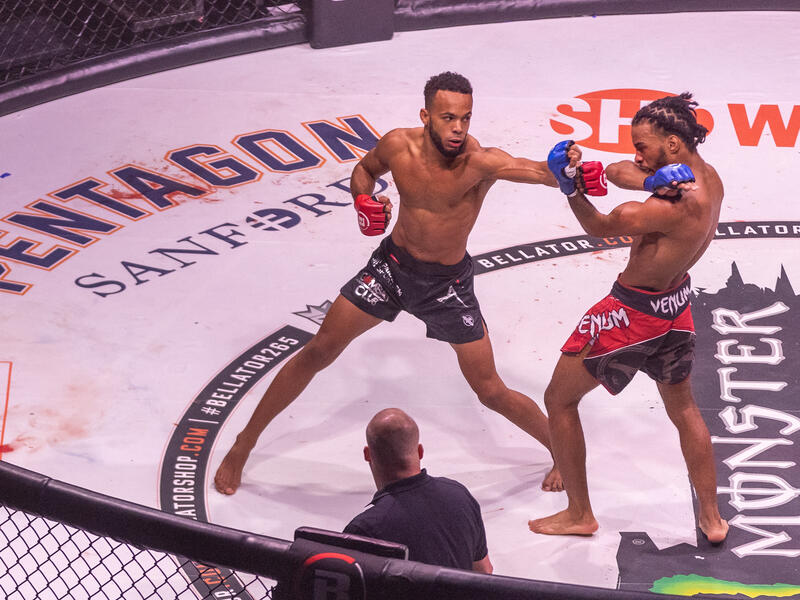Two dozen men and women will put their bodies through a beating April 14 at the Sanford Pentagon.
Kicks, punches, knees and elbows to the head. There will be blood. They may be knocked unconscious. But they know that going in.
The athletes are mixed martial arts fighters competing in LFA 156, a professional, sanctioned event pitting rising stars in the sport against each other for a shot at earning contracts with larger MMA entities such as Bellator and UFC.
The Sanford Pentagon in Sioux Falls, South Dakota, has hosted MMA events since 2014, including three Bellator MMA championship cards as well as multiple RFA/LFA cards. More than a dozen fighters who have competed at the Pentagon have gone on to fight for Bellator MMA or UFC.
The sport continues to gain popularity — not only with fans, but also with athletes: men and women who have chosen to dedicate themselves to climbing the ranks of mixed martial arts.
Upstairs in the Pentagon’s sports science lab, Thayne Munce, Ph.D., and his team at Sanford Research have been studying the effects the sport has on fighters for the past several years.
“Guidelines for when it is safe to return (to fighting) for fighters who have been knocked out, or fighters who have incurred any damage, are inadequate from a brain-health perspective,” Dr. Munce said. “The NFL has a concussion protocol, a step-by-step plan for return to play. MMA doesn’t have that, even though there is a high rate of concussion and brain injury.”
Fighters motivated to help with study
The goal of Dr. Munce’s MMA research is to provide better guidance for stakeholders in the sport when it comes to brain trauma to better protect the athletes competing. Dr. Munce and his team have been working with about a dozen of those athletes. Dr. Munce says there are two big reasons the fighters have signed up to participate in the study.
“They are aware that MMA carries a risk for brain injury and trauma, and they want to evaluate where they’re at as they progress in their careers, and there’s also an interest in helping elevate the health and safety of the sport.”
Dr. Munce and his team evaluate changes in brain function of fighters before and after fights. They want to know if there is a measurable impairment in athletes after the fight. This includes all fighters — those who have been knocked out and more likely to experience a brain injury, but also fighters who have escaped fights with minimal damage to their bodies.
“We do an evaluation that includes a variety of balance, reaction time, eye tracking and brain wave activity assessments to establish baseline values,” Dr. Munce said. “We then retest athletes within a few days after their fight, then again at a later date to compare measurements.”
Control subjects who are not involved in the sport are also brought in and measured to compare results.
This study is the first step
Dr. Munce and his team have completed their initial study and are in the process of submitting their findings to a scientific journal for publication. They have already started a new investigation that adds advanced neuroimaging, performed at the Sanford USD Medical Center, to their protocol.
“We discovered several notable differences between MMA athletes and control individuals that we will be detailing in our upcoming papers,” Dr. Munce said. “Interestingly, our results suggest that cumulative MMA participation, rather than what happens during one fight, is a stronger determinant of the differences we observed. Neuroimaging will allow us to learn even more about the brain health of MMA athletes and better understand the safety profile of this sport.”
When the goal of the sport is to try to knock out the opponent, injury is inevitable. But having the right information about your health before signing up for your next fight is invaluable.
“I can’t overstate how skilled these athletes are, but the risk for injury in MMA is greater than in many other sports,” Dr. Munce said. “We want to learn more about those risks and protect the athlete.”
Learn more
- Podcast: Concussions treated quickly can recover quickly
- Sanford study shows fewer head impacts in youth football
- High school wrestler returns to the mat after concussion
…
Posted In News, Research, Sanford Sports, Sports Medicine
